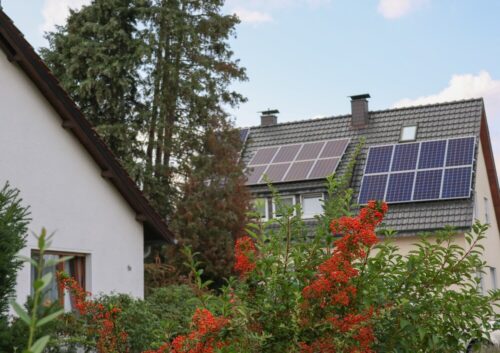
The roll back for federal support of clean energy signed into law in July 2025 included the end of the 30% tax credit for residential solar and home battery storage systems. If you want to obtain this Residential Clean Energy Credit you will need to have your residential solar and/or battery storage system installed and operational by December 31, 2025. Permits for solar systems take a couple of months to secure and many solar companies are reporting substantial demand. If you want to take advantage of this tax credit ACT NOW.
Get a bid from an Energy Trust of Oregon Allied Contractor through the ETO Solarize Lake Oswego webpage.
Why add solar to your home?
- You add clean energy to the grid.
- Oregon’s goal is to have investor-owned utilities reduce their greenhouse gas emissions by 80% by 2030. In 2024, PGE was only one third of the way to
meeting that emission target. When Oregonians add solar they help meet this goal.
- Oregon’s goal is to have investor-owned utilities reduce their greenhouse gas emissions by 80% by 2030. In 2024, PGE was only one third of the way to
- You save money on your energy bills.
- The break-even point is reported between 8-14 years—after that you have paid off your system and your electricity is free. Residential solar systems usually last 25 years.
- Electricity prices continue to rise, so solar purchased now is a hedge against future electricity price increases.
- You add value to your home.
- A recent study showed residential solar increases the value of your home by an average of 6.9%.
- Homes with solar sell faster than those without solar.
- In Oregon, this increased value is exempt from property tax increase.
- If you add a battery system, you will be energy resilient.
- You will ensure that you have electricity during power outages.
What are the characteristics of homes that can add solar?
- Your house is a primary or secondary home, not a home you are renting.
- Your roof planes face south, east or west.
- Your roof does not have substantial shade.
- Obstruction by shade can be determined by satellite imagery.
- More refined analysis can be completed by your contractor.
- Your roof is in good condition and has at least 10 years of roof life.
What are the financial advantages of solar?
The federal tax credit is 30%.
- It is only valuable to homeowners who pay federal taxes.
- Make sure you have enough tax liability to take advantage of this tax credit.
- At this time, some tax liability can be carried forward to future years.
- Example: For a system that costs $30,000, the federal tax credit would be $9,000.
Energy Trust of Oregon offers additional rebates. These rebates will continue beyond the federal cut-off. For residents in Lake Oswego, they include:
- $850 for solar.
- $350/kWh for battery storage systems up to $4,200.
- You must use an Energy Trust of Oregon allied contractor to access this rebate.
Financing
- Financing of systems is common.
- Installers may offer financial plans.
- Credit unions may have loans tailored to solar.
Net Metering
- In the summer, during the day you will generate more electricity than you can use. This electricity will flow back into the grid. PGE will give you credit for this electricity.
- During the winter, when you are not generating enough electricity, PGE will supply you with electricity and you will pay the bill using the credits you’ve accrued from PGE in summer.
- This is called “net metering”.
- These credits roll over from month to month through the year, but not from year to year.
- If you have not used your credits by March 31, they are donated to low-income subscribers or nonprofits.
- When you purchase your system, your contractor will size your system based on your past use by looking at your PGE bills so that your net-metering credits fit your usage.
When you request a bid through the ETO Solarize Lake Oswego Website, installers will be clear with you if they can complete the work by December 31 so that you will be eligible for the 30% federal tax credit.